This is an old revision of this page, as edited by Wran (talk | contribs) at 15:02, 26 July 2012 (Undid revision 504215656 by Amatulic (talk)more neutral and exact). The present address (URL) is a permanent link to this revision, which may differ significantly from the current revision.
Revision as of 15:02, 26 July 2012 by Wran (talk | contribs) (Undid revision 504215656 by Amatulic (talk)more neutral and exact)(diff) ← Previous revision | Latest revision (diff) | Newer revision → (diff) This article is about the beverage. For other uses, see Wine (disambiguation).
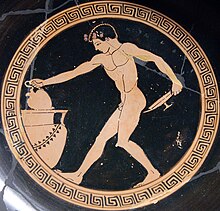
Wine is an alcoholic beverage made from fermented fruit juice, usually that of grapes. The natural chemical balance of grapes lets them ferment without the addition of sugars, acids, enzymes, or other nutrients. Yeast consumes the sugars in the grapes and converts them into alcohol. Different varieties of grapes and strains of yeasts produce different types of wine. The well-known variations are the result of the fact that the sum of the very complex interaction between the biochemical development of the fruit, reactions involved in fermentation and human intervention in the overall process, is a final product in which tens of thousands of chemical compounds may be present in amounts varying from a few percent to a few parts per billion.
Wines made from other fruits are usually named after the fruit from which they are produced (for example, apple wine or elderberry wine) and are generically called fruit wine. The term "wine" can also refer to the higher alcohol content of starch-fermented or fortified beverages such as barley wine, sake, and ginger wine. One thing which makes wine from grapes the unique and highly prized beverage that it is, is that it can possess a vast variety of gustatory and olfactory qualities that are characteristic of a great many other fruits, vegetables, flowers, foodstuffs, and even minerals, often in combinations that are regarded as interesting and pleasing; this helps to explain wine's popularity throughout the ages.
Wine has a rich history dating back thousands of years, with the earliest known production occurring around 8,000 years ago on the territory of modern-day Georgia. It first appeared in the Balkans about 4500 BC and was very common in ancient Greece, Thrace and Rome. Wine has also played an important role in religion throughout history. The Greek god Dionysus and the Roman equivalent Bacchus represented wine, and the drink is also used in Christian Eucharist ceremonies and the Jewish Kiddush.
Etymology
The English word "wine" comes from the Proto-Germanic "*winam," an early borrowing from the Latin vinum, "wine" or "(grape) vine", itself derived from the Proto-Indo-European stem *win-o- (cf. Hittite: wiyana, Lycian: Oino, Ancient Greek οῖνος—oînos, Aeolic Greek ϝοίνος—woinos).
The earliest attested terms referring to wine are the Mycenaean Greek me-tu-wo ne-wo meaning "the month of new wine" or "festival of the new wine" and wo-no-wa-ti-si meaning "wine garden", written in Linear B inscriptions.
Although no clear evidence has been found of any linguistic connection, some scholars have noted the similarities between the words for wine in the Kartvelian (e.g. Georgian ღვინო Template:IPA-ka), Indo-European languages (e.g. Russian вино Template:IPA-ru), and Semitic (*wayn), hinting to the possibility that this word diffused into all these language families from a common origin. Some Georgian scholars have speculated that Georgian was the origin of this word and that it entered into the Indo-European languages via Semitic.
Wines from other fruits, such as apples and berries, are usually named after the fruit from which they are produced combined with the word "wine"; (for example, apple wine or elderberry wine) and are generically called fruit wine or country wine (not to be confused with the French term vin de pays). Others, such as barley wine and rice wine (i.e., sake), are made from starch-based materials and resemble beer more than wine, while ginger wine is fortified with brandy. In these latter cases, the term "wine" refers to the similarity in alcohol content rather than to the production process. The commercial use of the English word "wine" (and its equivalent in other languages) is protected by law in many jurisdictions.
History
Main article: History of wineArchaeological evidence suggests that the earliest known production of wine, made by fermenting grapes, took place from the late Neolithic or early Chalcolithic, possibly as early as the sixth millennium BC, between the Caucasus and the Middle East, with clues of winemaking in different sites dated from 6000 BC in Georgia, 5000 BC in Iran, and 4100 BC in Armenia. During an extensive gene-mapping project in 2006, archaeologists analyzed the heritage of more than 110 modern grape cultivars, and narrowed their origin to a region in Georgia, where wine residues were also discovered on the inner surfaces of 8,000-year-old ceramic storage jars. Chemical analysis of 7,000-year-old pottery shards indicated early winemaking in the neolithic village of Hajji Firuz Tepe in Iran's Zagros Mountains. Other notable areas of wine production have been discovered in Greece and date back to 4500 BC. The same sites also contain the world's earliest evidence of crushed grapes. A wine making press was found in 2011 in the Areni-1 site of Armenia, and dated around 4100 BC. Literary references to wine are abundant in Homer (9th century BC, but possibly composed even earlier), Alkman (7th century BC), and others. In Ancient Egypt, six of 36 wine amphoras were found in the tomb of King Tutankhamun bearing the name "Kha'y", a royal chief vintner. Five of these amphoras were designated as from the King's personal estate with the sixth listed as from the estate of the royal house of Aten. Traces of wine have also been found in central Asian Xinjiang, dating from the second and first millennia BC.
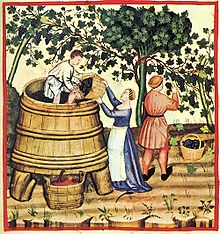
The first known mentioning of grape-based wines in India was in the late 4th century BC writings of Chanakya who was the chief minister of Emperor Chandragupta Maurya. In his writings, Chanakya condemns the use of alcohol while chronicling the emperor and his court's frequent indulgence of a style of grape wine known as Madhu.
A 2003 report by archaeologists indicates a possibility that grapes were mixed with rice to produce mixed fermented beverages in China in the early years of the seventh millennium BC. Pottery jars from the Neolithic site of Jiahu, Henan, contained traces of tartaric acid and other organic compounds commonly found in wine. However, other fruits indigenous to the region, such as hawthorn, cannot be ruled out. If these beverages, which seem to be the precursors of rice wine, included grapes rather than other fruits, these grapes were of any of the several dozen indigenous wild species of grape in China, rather than from Vitis vinifera, which were introduced into China some 6000 years later.
One of the lasting legacies of the ancient Roman Empire was the viticulture foundation the Romans laid in the lands that today are world renowned wine regions. In areas with Roman garrison towns, like Bordeaux, Trier, and Colchester, the Romans planted vineyards to supply local needs and limit the cost of long distance trading. In medieval Europe, the Roman Catholic Church staunchly supported wine, since they required it for the Mass. Monks in France made wine for years, aging it in caves. An old English recipe that survived in various forms until the 19th century calls for refining white wine from bastard—bad or tainted bastardo wine.
Grape varieties
Main article: List of grape varieties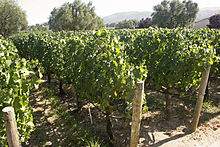
Wine is usually made from one or more varieties of the European species Vitis vinifera, such as Pinot Noir, Chardonnay, Cabernet Sauvignon, Gamay and Merlot. When one of these varieties is used as the predominant grape (usually defined by law as a minimum of 75% or 85%), the result is a varietal, as opposed to a blended, wine. Blended wines are not considered inferior to varietal wines, rather they are a different style of wine making; some of the world's most expensive wines, from regions like Bordeaux and the Rhone Valley, are blended from different grape varieties.
Wine can also be made from other species of grape or from hybrids, created by the genetic crossing of two species. Vitis labrusca (of which the Concord grape is a cultivar), Vitis aestivalis, Vitis rupestris, Vitis rotundifolia and Vitis riparia are native North American grapes usually grown to eat fresh or for grape juice, jam, or jelly, but sometimes made into wine.
Hybridization is different from grafting. Most of the world's vineyards are planted with European V. vinifera vines that have been grafted onto North American species rootstock. This is common practice because North American grape species are resistant to phylloxera, a root louse that eventually kills the vine. In the late 19th century, most of Europe's vineyards (only excluding some of the driest vineyards in Southern Europe) were devastated by the bug, leading to massive vine deaths and eventual replanting. Grafting is done in every wine-producing country of the world except for Argentina, the Canary Islands and Chile—the only countries not yet exposed to the insect.
In the context of wine production, terroir is a concept that encompasses the varieties of grapes used, elevation and shape of the vineyard, type and chemistry of soil, climate and seasonal conditions, and the local yeast cultures. The range of possibilities here can result in great differences between wines, influencing the fermentation, finishing, and aging processes as well. Many wineries use growing and production methods that preserve or accentuate the aroma and taste influences of their unique terroir. However, flavor differences are not desirable for producers of mass-market table wine or other cheaper wines, where consistency is more important. Such producers try to minimize differences in sources of grapes through production techniques such as micro-oxygenation, tannin filtration, cross-flow filtration, thin film evaporation, and spinning cones.
Classification
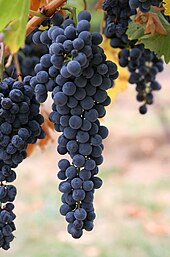
Regulations govern the classification and sale of wine in many regions of the world. European wines tend to be classified by region (e.g. Bordeaux, Rioja and Chianti), while non-European wines are most often classified by grape (e.g. Pinot Noir and Merlot). More and more, however, market recognition of particular regions is leading to their increased prominence on non-European wine labels. Examples of non-European recognized locales include Napa Valley and Sonoma Valley in California, Willamette Valley in Oregon, Columbia Valley in Washington, Barossa Valley and Hunter Valley in Australia, Central Valley in Chile, Vale dos Vinhedos in Brazil, Hawke's Bay and Marlborough in New Zealand, Okanagan Valley and Niagara Peninsula in Canada.
Some blended wine names are marketing terms, and the use of these names is governed by trademark law rather than by specific wine laws. For example, Meritage (sounds like "heritage") is generally a Bordeaux-style blend of Cabernet Sauvignon and Merlot, and may also include Cabernet Franc, Petit Verdot, and Malbec. Commercial use of the term "Meritage" is allowed only via licensing agreements with an organization called the "Meritage Association".
European classifications
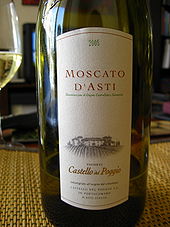
France has various appellation systems based on the concept of terroir, with classifications ranging from Vin de Table ("table wine") at the bottom, through Vin de Pays and Appellation d'Origine Vin Délimité de Qualité Supérieure (AOVDQS) up to Appellation d'Origine Contrôlée (AOC) or similar, depending on the region. Portugal has something similar and, in fact, pioneered this technique in 1756 with a royal charter that created the "Demarcated Douro Region" and regulated wine production and trade. Germany did likewise in 2002, although their system has not yet achieved the authority of those of the other countries'. Spain, Greece and Italy have classifications based on a dual system of region of origin and product quality.
Beyond Europe
New World wine—wines from outside of the traditional wine growing regions of Europe tend to be classified by grape rather than by terroir or region of origin, although there have been non-official attempts to classify them by quality.
Vintages
Main article: VintageA "vintage wine" is one made from grapes that were all or mostly grown in a particular year, and labeled as such. Some countries allow a vintage wine to include a small portion that is not from the labeled vintage. Variations in a wine's character from year to year can include subtle differences in color, palate, nose, body and development. High-quality wines can improve in flavor with age if properly stored. Consequently, it is not uncommon for wine enthusiasts and traders to save bottles of an especially good vintage wine for future consumption.
In the United States, for a wine to be vintage dated and labeled with a country of origin or American Viticultural Area (AVA) (such as "Sonoma Valley"), it must contain at least 95% of its volume from grapes harvested in that year. If a wine is not labeled with a country of origin or AVA the percentage requirement is lowered to 85%.
Vintage wines are generally bottled in a single batch so that each bottle will have a similar taste. Climate can have a big impact on the character of a wine to the extent that different vintages from the same vineyard can vary dramatically in flavor and quality. Thus, vintage wines are produced to be individually characteristic of the vintage and to serve as the flagship wines of the producer. Superior vintages, from reputable producers and regions, will often fetch much higher prices than their average vintages. Some vintage wines, like Brunellos, are only made in better-than-average years.
For consistency, non-vintage wines can be blended from more than one vintage, which helps wine makers sustain a reliable market image and maintain sales even in bad years. One recent study suggests that for normal drinkers, vintage year may not be as significant to perceived wine quality as currently thought, although wine connoisseurs continue to place great importance on it.
Tasting
Main article: Wine tasting See also: Wine tasting descriptors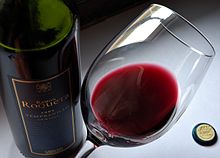
Wine tasting is the sensory examination and evaluation of wine. Wines are made up of chemical compounds similar or identical to those in fruits, vegetables, and spices. The sweetness of wine is determined by the amount of residual sugar in the wine after fermentation, relative to the acidity present in the wine. Dry wine, for example, has only a small amount of residual sugar.
Some wine labels suggest opening the bottle and letting the wine "breathe" for a couple of hours before serving, while others recommend drinking it immediately. Decanting—the act of pouring a wine into a special container just for breathing—is a controversial subject in wine. In addition to aeration, decanting with a filter allows one to remove bitter sediments that may have formed in the wine. Sediment is more common in older bottles but younger wines usually benefit more from aeration.
During aeration, the exposure of younger wines to air often "relaxes" the flavors and makes them taste smoother and better integrated in aroma, texture, and flavor. Older wines generally fade, or lose their character and flavor intensity, with extended aeration. Despite these general rules, breathing does not necessarily benefit all wines. Wine should be tasted as soon as it is opened to determine how long it should be aerated, if at all.
Individual flavors may also be detected, due to the complex mix of organic molecules such as esters and terpenes that grape juice and wine can contain. Experienced tasters can distinguish between flavors characteristic of a specific grape and flavors that result from other factors in wine making. Typical intentional flavor elements in wine are those imparted by aging in oak casks; chocolate, vanilla, or coffee almost always come from the oak and not the grape itself.
Banana flavors (isoamyl acetate) are the product of yeast metabolism, as are spoilage aromas such as sweaty, barnyard, band-aid (4-ethylphenol and 4-ethylguaiacol), and rotten egg (hydrogen sulfide). Some varietals can also have a mineral flavor due to the presence of water-soluble salts (like limestone).
Wine aroma comes from volatile compounds in the wine that are released into the air. Vaporization of these compounds can be sped up by twirling the wine glass or serving the wine at room temperature. For red wines that are already highly aromatic, like Chinon and Beaujolais, many people prefer them chilled.
Collecting
See also: Aging of wine, Investment wine, and Storage of wine
Outstanding vintages from the best vineyards may sell for thousands of dollars per bottle, though the broader term fine wine covers bottles typically retailing at over about US$30–50. "Investment wines" are considered by some to be Veblen goods—that is, goods for which demand increases instead of decreases as its price rises. The most common wines purchased for investment include those from Bordeaux, Burgundy, cult wines from Europe and elsewhere, and Vintage port. Characteristics of highly collectible wines include:
- A proven track record of holding well over time
- A drinking window plateau (i.e., the period for maturity and approachability) that is many years long
- A consensus among experts as to the quality of the wines
- Rigorous production methods at every stage, including grape selection and appropriate barrel-aging
Investment in fine wine has attracted fraudsters who prey on their victims' ignorance of this sector of the wine market. Wine fraudsters often work by charging excessively high prices for off-vintage or lower-status wines from famous wine regions, while claiming that they are offering a sound investment unaffected by economic cycles. Like any investment, proper research is essential before investing.
Production

* FAO estimate. |
* FAO estimate. | ||||||||||||||||||||||||||||||||||||||||||||||||||||||||||||||||||||||||
Wine grapes grow almost exclusively between thirty and fifty degrees north or south of the equator. The world's southernmost vineyards are in the Central Otago region of New Zealand's South Island near the 45th parallel south, and the northernmost are in Flen, Sweden, just north of the 59th parallel north.
Exporting countries
* Unofficial figure. |
| |||||||||||||||||||||||||||||||||||||||||||||||||||||||||||||||||||||
The UK was the world's biggest importer of wine in 2007.
Consumption
Wine consumption data from a list of countries by alcohol consumption measured in liters of pure ethyl alcohol consumed per capita in a given year, according to the most recent data from the World Health Organization. The methodology used by the WHO counted use by persons 15 years of age or older.
|
|
Uses
Wine is a popular and important beverage that accompanies and enhances a wide range of European and Mediterranean-style cuisines, from the simple and traditional to the most sophisticated and complex. Wine is important in cuisine not just for its value as a beverage, but as a flavor agent, primarily in stocks and braising, since its acidity lends balance to rich savory or sweet dishes. Red, white, and sparkling wines are the most popular, and are known as light wines because they are only 10–14% alcohol-content by volume. Apéritif and dessert wines contain 14–20% alcohol, and are sometimes fortified to make them richer and sweeter.
Religious significance
See also: Alcohol and religion, Kosher wine, Christianity and alcohol, and Islam and alcoholAncient religions
The use of wine in religious ceremonies is common to many cultures and regions. Libations often included wine, and the religious mysteries of Dionysus used wine as a sacramental entheogen to induce a mind-altering state.
Judaism
Wine is an integral part of Jewish laws and traditions. The Kiddush is a blessing recited over wine or grape juice to sanctify the Shabbat or a Jewish holiday. On Pesach (Passover) during the Seder, it is a Rabbinic obligation of men and women to drink four cups of wine. In the Tabernacle and in the Temple in Jerusalem, the libation of wine was part of the sacrificial service. Note that this does not mean that wine is a symbol of blood, a common misconception that contributes to the myth of the blood libel. The blessing over wine said before consuming the drink is: "Baruch atah Hashem (Adonai) Eloheinu melech ha-olam, boray p’ree hagafen"—"Praised be the Lord, our God, King of the universe, Creator of the fruit of vine."
Christianity

- See also: Christianity and alcohol and Alcohol in the Bible

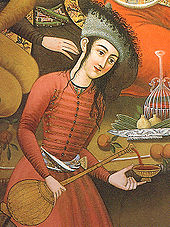
In Christianity, wine is used in a sacred rite called the Eucharist, which originates in the Gospel account of the Last Supper (Gospel of Luke 22:19) that describe Jesus sharing bread and wine with his disciples and commanding them to "do this in remembrance of me." Beliefs about the nature of the Eucharist vary among denominations (see Eucharistic theologies contrasted).
While some Christians consider the use of wine from the grape as essential for validity of the sacrament, many Protestants also allow (or require) unfermented, pasteurized grape juice as a substitute. Wine was used in Eucharistic rites by all Protestant groups until an alternative arose in the late 19th century. Methodist dentist and prohibitionist Thomas Bramwell Welch applied new pasteurization techniques to stop the natural fermentation process of grape juice. Some Christians who were part of the growing temperance movement pressed for a switch from wine to grape juice, and the substitution spread quickly over much of the United States and to other countries to a lesser degree. There remains an ongoing debate between some American Protestant denominations as to whether wine can and should be used for the Eucharist or allowed as an ordinary beverage.
Islam
Alcoholic beverages, including wine, are forbidden under most interpretations of Islamic law. Iran previously had thriving wine industries that disappeared after the Islamic Revolution in 1979. In Greater Persia, Mey (Persian wine) has been a central theme of poetry for more than a thousand years, long before the advent of Islam. Some Alevi sects use wine in their religious services.
Certain exceptions to this rule apply. Alcohol derived from a source other than grape (or its by-product) and date is allowed in very small quantities (loosely defined as a quantity that does not intoxicate a person) under the Sunni Hanafi madhab, for specific purposes (such as medicines), where the goal is not intoxication, with modern Hanafi scholars regarding alcohol consumption as totally forbidden.
Health effects
See also: Health effects of wine| Nutritional value per 100 g (3.5 oz) | |||||||
|---|---|---|---|---|---|---|---|
| Energy | 355 kJ (85 kcal) | ||||||
| Carbohydrates | 2.6 g | ||||||
| Sugars | 0.6 g | ||||||
| Fat | 0.0 g | ||||||
| Protein | 0.1 g | ||||||
| |||||||
| Other constituents | Quantity | ||||||
| Alcohol (ethanol) | 10.6 g | ||||||
10.6 g alcohol is 13%vol. 100 g wine is approximately 100 ml (3.4 fl oz.) Sugar and alcohol content can vary. | |||||||
Although excessive alcohol consumption has adverse health effects, epidemiological studies have consistently demonstrated that moderate consumption of alcohol and wine is statistically associated with a decrease in death due to cardiovascular events such as heart failure according to additional news reports on the French Paradox. The French paradox refers to the comparatively lower incidence of coronary heart disease in France despite high levels of saturated fat in the traditional French diet. Some epidemiologists suspect that this difference is due to the higher consumption of wines by the French, but the scientific evidence for this theory is limited. The average moderate wine drinker is more likely to exercise more, to be more health conscious, and to be of a higher educational and socioeconomic class, evidence that the association between moderate wine drinking and health may be related to confounding factors.
Population studies have observed a J curve association between wine consumption and the risk of heart disease. This means that heavy drinkers have an elevated risk, while moderate drinkers (up to 20 g per day, approximately 20 ml) have a lower risk than non-drinkers. Studies have also found that moderate consumption of other alcoholic beverages may be cardioprotective, although the association is considerably stronger for wine. Also, some studies have found increased health benefits for red wine over white wine, though other studies have found no difference. Red wine contains more polyphenols than white wine, and these are thought to be particularly protective against cardiovascular disease.
A chemical in red wine called resveratrol has been shown to have both cardioprotective and chemoprotective effects in animal studies. Low doses of resveratrol in the diet of middle-aged mice has a widespread influence on the genetic levers of aging and may confer special protection on the heart. Specifically, low doses of resveratrol mimic the effects of what is known as caloric restriction—diets with 20–30 percent fewer calories than a typical diet. Resveratrol is produced naturally by grape skins in response to fungal infection, including exposure to yeast during fermentation. As white wine has minimal contact with grape skins during this process, it generally contains lower levels of the chemical. Other beneficial compounds in wine include other polyphenols, antioxidants, and flavonoids.
To fully get the benefits of resveratrol in wines, it is recommended to sip slowly when drinking wines. Due to inactivation in the gut and liver, most of the resveratrol in imbibed red wine does not reach the blood circulation. However, when sipping slowly, absorption via the mucous membranes in the mouth can result in up to around 100 times the blood levels of resveratrol.
Red wines from the south of France and from Sardinia in Italy have been found to have the highest levels of procyanidins, which are compounds in grape seeds suspected to be responsible for red wine's heart benefits. Red wines from these areas have between two and four times as much procyanidins as other red wines. Procyanidins suppress the synthesis of a peptide called endothelin-1 that constricts blood vessels.
A 2007 study found that both red and white wines are effective anti-bacterial agents against strains of Streptococcus. Also, a report in the October 2008 issue of Cancer Epidemiology, Biomarkers and Prevention, posits that moderate consumption of red wine may decrease the risk of lung cancer in men.
While evidence from laboratory and epidemiological (observational) studies suggest a cardioprotective effect, no controlled studies have been completed on the effect of alcoholic drinks on the risk of developing heart disease or stroke. Excessive consumption of alcohol can cause cirrhosis of the liver and alcoholism; the American Heart Association cautions people to "consult your doctor on the benefits and risks of consuming alcohol in moderation."
Wine's effect on the brain is also under study. One study concluded that wine made from the Cabernet Sauvignon grape reduces the risk of Alzheimer's Disease. Another study concluded that among alcoholics, wine damages the hippocampus to a greater degree than other alcoholic beverages.
Sulfites are present in all wines and are formed as a natural product of the fermentation process, and many wine producers add sulfur dioxide in order to help preserve wine. The level of added sulfites varies, and some wines have been marketed with low sulfite content. Sulfites in wine can cause some people, particularly those with asthma, to have adverse reactions.
A study of women in the United Kingdom, called The Million Women Study, concluded that moderate alcohol consumption can increase the risk of certain cancers, including breast, pharynx and liver cancer. This has led the lead author of the study, Professor Valerie Beral, to assert that there is not enough evidence to conclude that any positive health effects of red wine outweigh the risk of cancer, and is quoted as saying, "It's an absolute myth that red wine is good for you." Professor Roger Corder, author of The Red Wine Diet, counters that two small glasses of a very tannic, procyanadin rich wine would confer a benefit, although "most supermarket wines are low procyanadin and high alcohol."
Forgery and manipulation of wines
Main article: Wine fraud See also: List of food contamination incidentsIncidents of fraud, such as mis-labeling the origin or quality, have resulted in regulations on labeling. "Wine scandals" that have received media attention include:
- The 1985 Diethylene Glycol Wine Scandal, in which diethylene glycol was used as a sweetener in some Austrian wines.
- In 1986, methanol (a toxic type of alcohol) was used to alter certain wines manufactured in Italy.
- In 2008, Italian wines were found to include sulfuric acid and hydrochloric acid.
Packaging
See also: Cork (material), Closure (bottle), Alternative wine closures, Wine bottle, Box wine, and Screw cap (wine)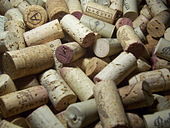
Most wines are sold in glass bottles and are sealed using corks (50% of which come from Portugal). An increasing number of wine producers have been using alternative closures such as screwcaps, or synthetic plastic "corks". In addition to being less expensive, alternative closures prevent cork taint, although they have been blamed for other problems such as excessive reduction.
Some wines are packaged in heavy plastic bags within corrugated fiberboard boxes, and are called box wines, or cask wine. The bag in box is typically accessed via a tap on the side of the box. Box wine can stay acceptably fresh for up to a month after opening, while bottled wine oxidizes more rapidly and can degrade considerably in a few days.
Environmental considerations of wine packaging reveal benefits and drawbacks of both bottled and box wines. The glass used to make bottles is a nontoxic naturally-occurring substance that is completely recyclable, whereas the plastics used for box wine containers are typically much less environmentally friendly. However, wine bottle manufacturers have been cited for Clean Air Act violations. A New York Times editorial suggested that box wine, being lighter in package weight, has a reduced carbon footprint from its distribution. Boxed wine plastics, even though possibly recyclable, can be more labor-intensive (and therefore expensive) to process than glass bottles. And, while a wine box is recyclable, its plastic wine bladder most likely is not.
Storage
Main article: Storage of wineWine cellars, or wine rooms if they are above-ground, are places designed specifically for the storage and aging of wine. In an active wine cellar, temperature and humidity are maintained by a climate control system. Passive wine cellars are not climate-controlled, and so must be carefully located. Wine is a natural, perishable food product; when exposed to heat, light, vibration or fluctuations in temperature and humidity, all types of wine, including red, white, sparkling, and fortified, can spoil. When properly stored, wines can maintain their quality and in some cases improve in aroma, flavor, and complexity as they age. Some wine experts contend that the optimal temperature for aging wine is 55 °F (13 °C), others 59 °F (15 °C). Wine refrigerators offer an alternative to wine cellars. They are available in capacities ranging from small 16-bottle units to furniture pieces that can contain 400 bottles. Wine refrigerators are not ideal for aging, but rather serve to chill wine to the perfect temperature for drinking. These refrigerators keep the humidity low, usually under 50%, which is below the optimal humidity of 50% to 70%. Lower humidity levels can dry corks out over time, allowing oxygen to enter the bottle and reduce the wine's quality.

Professions
| Name | Description |
|---|---|
| Cooper | Craftsman of wooden barrels and casks. A cooperage is a company that produces such casks. |
| Négociant | A wine merchant, most specifically those who assemble the produce of smaller growers and winemakers and sells them under their own name |
| Oenologist | Wine scientist or wine chemist; a student of oenology. A winemaker may be trained as oenologist, but often hires a consultant instead |
| Sommelier | A restaurant specialist in charge of assembling the wine list, educating the staff about wine, and assisting customers with their wine selections |
| Vintner, Winemaker | A wine producer; a person who makes wine |
| Viticulturist | A person who specializes in the science of grapevines—can also be someone who manages vineyard pruning, irrigation, and pest control |
See also
Main article: Outline of wine
|
References
- Notes
- ^ "wine". Encyclopædia Britannica. Encyclopædia Britannica Online. Retrieved 25 June 2008.
- Johnson, H. (1989). Vintage: The Story of Wine. Simon & Schuster. pp. 11–6. ISBN 0-671-79182-6.
- ^ Keys, David (28 December 2003). "Now that's what you call a real vintage: professor unearths 8,000-year-old wine". The Independent. London. Retrieved 25 June 2008.
- ^ Berkowitz, Mark (1996). "World's Earliest Wine". Archaeology. 49 (5). Archaeological Institute of America. Retrieved 25 June 2008.
- Harper, Douglas (2001). "wine". Online Etymology Dictionary. Retrieved 25 June 2008.
- Whiter, Walter (1800). "Wine". Etymologicon Magnum, Or Universal Etymological Dictionary, on a New Plan. Francis Hodson. p. 145. Retrieved 25 June 2008.
- Mycenaean and Late Cycladic Religion and Religious Architecture, Dartmouth College
- T.G. Palaima, The Last days of Pylos Polity, Université de Liège
- James C. Wright, The Mycenaean feast, American School of Classical Studies, 2004, on Google books
- Palaeolexicon, Word study tool of ancient languages
- Benjamin W. Fortson IV Indo-European Language and Culture, an introduction, Blackwell Publishing 2010, p. 42, on Google books
- Center for Research of Kartvelian Civilization
- Allen, Fal. "Barley Wine". Anderson Valley Brewing Company. Archived from the original on 27 February 2008. Retrieved 25 June 2008.
- George, Rosemary (1991). The Simon & Schuster Pocket Wine Label Decoder. Fireside. ISBN 978-0-671-72897-7.
- Owen, James (20 January 2011). "Earliest Known Winery Found in Armenian Cave". National Geographic. Retrieved 28 March 2011.
- Keys, David (28 December 2003). "Now that's what you call a real vintage: professor unearths 8,000-year-old wine". The Independent. London.
- ^ Viegas, Jennifer (16 March 2007). "Ancient Mashed Grapes Found in Greece". Discovery News. Discovery Communications. Retrieved 25 June 2008.
- Bureau Report. "Mashed grapes find could re-write history of wine". Zee News. Retrieved 25 June 2008.
- http://news.am/arm/news/44129.html
- http://news.am/eng/news/44129.html
- http://www.elsevier.com/wps/find/journaldescription.cws_home/622854/description#description
- Johnson, Hugh (1989). Vintage: The Story of Wine. Simon and Schuster. p. 32. ISBN 0-671-68702-6.
- Rong, Xu Gan. "Wine Production in China". Grandiose Survey of Chinese Alcoholic Drinks and Beverages. Retrieved 25 June 2008.
{{cite web}}: Unknown parameter|coauthors=ignored (|author=suggested) (help) - J. Robinson (ed) The Oxford Companion to Wine Third Edition, pp. 355–356 Oxford University Press 2006 ISBN 0-19-860990-6
- ^ Patrick E. McGovern; et al. (30 September 2003). "Fermented beverages of pre- and proto-historic China". Proceedings of the National Academy of Sciences. The National Academy of Sciences.
{{cite news}}: Explicit use of et al. in:|author=(help) - "Penn Museum Archaeochemist And International Scholars Confirm 9,000-Year History Of Chinese Fermented Beverages". ScienceDaily. ScienceDaily LLC. 24 December 2004.
- H. Johnson Vintage: The Story of Wine pg 82–89 Simon and Schuster 1989 ISBN 0-671-68702-6
- Phillips, Rod (12 November 2002). A Short History of Wine. Harper Perennial. pp. 62–63. ISBN 978-0-06-093737-9.
- "The Great Resource". 1. Episode 9. 3 November 2006.
{{cite episode}}: Cite has empty unknown parameter:|episodelink=(help); Unknown parameter|serieslink=ignored (|series-link=suggested) (help) - Robinson, Jancis (28 April 2006). Jancis Robinson's Wine Course: A Guide to the World of Wine. Abbeville Press. p. 97. ISBN 978-0-7892-0883-5.
- Johnson, Hugh (13 September 2001). The World Atlas of Wine. Mitchell Beazley. pp. 22–23. ISBN 978-1-84000-332-1.
{{cite book}}: Unknown parameter|coauthors=ignored (|author=suggested) (help) - Citriglia, Matthew (14 May 2006). "High Alcohol is a Wine Fault... Not a Badge of Honor". GeekSpeak, LLC. Retrieved 25 June 2008.
- "Wine classification". French Wine Guide. Retrieved 22 June 2007.
- Goode, Jamie. "Terroir revisited: towards a working definition". Retrieved 22 June 2007.
- "The Spirit of the Commemorations". Retrieved 25 June 2008.
- "About German Wine". German wine society. Retrieved 22 June 2007.
- "German Wine Guide: Wine Laws and Classifications". The Winedoctor. Retrieved 22 June 2007.
- "Land of wines". Wines from Spain. Retrieved 17 July 2007.
- Chlebnikowski, Simon. "Towards an Australian Wine Classification". Nicks Wine Merchants. Retrieved 26 June 2008.
{{cite web}}: Unknown parameter|coauthors=ignored (|author=suggested) (help) - "Langton's Australian Wine Classification IV". 27 July 2007. Retrieved 26 June 2008.
- ^ Title 27 of the United States Code, Code of Federal Regulations §4.27
- Breton, Félicien. "Wine vintages, vintage charts". French Scout. Retrieved 26 June 2008.
- Platman, Clive (2 October 2002). "Wine: Lovely bubbly". Birmingham Post. Retrieved 26 June 2008.
- Alcohol and Tobacco Tax and Trade Bureau (2006). "Change to Vintage Date Requirements (2005R-212P)". Federal Register. 71 (84): 25748. Retrieved 26 June 2008.
{{cite journal}}: Unknown parameter|month=ignored (help) - Weil, Roman L. (25 May 2001). "Parker v. Prial: The Death of the Vintage Chart" (PDF). Retrieved 26 June 2008.
- Johnson, Hugh (13 September 2001). The World Atlas of Wine. Mitchell Beazley. p. 46. ISBN 978-1-84000-332-1.
{{cite book}}: Unknown parameter|coauthors=ignored (|author=suggested) (help) - "Fruity character and breathing times". New Straits Times. 18 September 2005. Retrieved 24 October 2007.
{{cite news}}: Cite has empty unknown parameter:|coauthors=(help) - Breton, Félicien. "Types of wine". French Scout. Retrieved 26 June 2008.
- ETS Laboratories (15 March 2001). "Brettanomyces Monitoring by Analysis of 4-ethylphenol and 4-ethylguaiacol". Retrieved 26 June 2008.
- ETS Laboratories (15 May 2002). "Sulfides in Wine". Retrieved 26 June 2008.
- Gómez-Míguez, M. José (2007). "Assessment of colour and aroma in white wines vinifications: Effects of grape maturity and soil type". Journal of Food Engineering. 79 (3): 758–764. doi:10.1016/j.jfoodeng.2006.02.038. Retrieved 26 June 2008.
{{cite journal}}: Unknown parameter|coauthors=ignored (|author=suggested) (help); Unknown parameter|month=ignored (help) - Johnson, Hugh (13 September 2001). The World Atlas of Wine. Mitchell Beazley. pp. 44–45. ISBN 978-1-84000-332-1.
{{cite book}}: Unknown parameter|coauthors=ignored (|author=suggested) (help) - For example, Berry Brothers & Rudd, one of the world's largest dealers, start "Fine wine" prices at about £25—in March 2009 with a wine from Au Bon Climat website "Fine wine offers".
- economist.com Fine-wine fraud.
- Food and Agriculture Organization of the United Nations production statistics
- ^ Crops processed at the Food and Agriculture Organization of the United Nations (FAO) website
- Courtney, Sue (16 April 2005). "New Zealand Wine Regions - Central Otago". Retrieved 26 June 2008.
- "Wine History". Retrieved 26 June 2008.
- ^ Crops and livestock products at the Food and Agriculture Organization of the United Nations (FAO) website
- "UK tops world wine imports table". BBC. 14 January 2009.
- http://www.who.int/substance_abuse/publications/global_alcohol_report/msbgsruprofiles.pdf
- Rich, Tracey R. "Pesach: Passover". Judaism 101.
- Neusner, Jacob (2000). The Halakhah: An Encyclopaedia of the Law of Judaism. Boston, Massachusetts: BRILL. p. 82. ISBN 90-04-11617-6.
- "Almost Like Wine". Time Magazine. 3 September 1956. Retrieved 26 June 2008.
- Harrison, Frances (11 April 2008). "Alcohol fatwa sparks controversy". BBC News. Retrieved 31 July 2010.
- Tait, Robert (12 October 2005). "End of the vine". London: Guardian News and Media Limited. Retrieved 26 June 2008.
- Sahih Muslim Book 043, Hadith Number 7186.
- Alcohol based Perfumes, Deodrants and Creams, Mufti Muhammad ibn Adam, Darul Iftaa, Leicester
- ^ Lindberg, Matthew L. (2008). "Alcohol, wine, and cardiovascular health". Clinical Cardiology. 31 (8): 347–51. doi:10.1002/clc.20263. PMID 18727003.
{{cite journal}}: Unknown parameter|coauthors=ignored (|author=suggested) (help) - Dodd, Tim H. (1994). "The impact of media stories concerning health issues on food product sales: management planning and responses". Journal of Consumer Marketing. 11 (2): 17–24. doi:10.1108/07363769410058894.
{{cite journal}}: Unknown parameter|coauthors=ignored (|author=suggested) (help) - Attention: This template ({{cite pmid}}) is deprecated. To cite the publication identified by PMID 19406740, please use {{cite journal}} with
|pmid=19406740instead. - Olas, Beata (2002). "Effect of resveratrol, a natural polyphenolic compound, on platelet activation induced by endotoxin or thrombin". Thrombosis Research. 107 (3): 141–145. doi:10.1016/S0049-3848(02)00273-6. Retrieved 26 June 2008.
{{cite journal}}: Unknown parameter|coauthors=ignored (|author=suggested) (help); Unknown parameter|month=ignored (help) - Barger, Jamie L. (2008). Tomé, Daniel (ed.). "A Low Dose of Dietary Resveratrol Partially Mimics Caloric Restriction and Retards Aging Parameters in Mice". PLoS ONE. 3 (6): e2264. doi:10.1371/journal.pone.0002264. PMC 2386967. PMID 18523577. Retrieved 26 June 2008.
{{cite journal}}: Cite has empty unknown parameter:|month=(help); Unknown parameter|coauthors=ignored (|author=suggested) (help)CS1 maint: unflagged free DOI (link) - Frémont, Lucie (2000). "Biological effects of resveratrol". Life Sciences. 66 (8): 663–673. doi:10.1016/S0024-3205(99)00410-5. PMID 10680575. Retrieved 26 June 2008.
{{cite journal}}: Unknown parameter|month=ignored (help) - de Lange, D.W. (2007). "From red wine to polyphenols and back: A journey through the history of the French Paradox". Thrombosis Research. 119 (4): 403–406. doi:10.1016/j.thromres.2006.06.001. PMID 16839597. Retrieved 26 June 2008.
{{cite journal}}: Cite has empty unknown parameter:|month=(help) - "Health Secrets of Red Wine Uncovered." Forbes. 06.11.2009
- Corder, R. "Oenology: Red wine procyanidins and vascular health". Nature. 444 (566): 566. doi:10.1038/444566a. PMID 17136085.
{{cite journal}}: Unknown parameter|coauthors=ignored (|author=suggested) (help) - Daglia, M. (2007). "Antibacterial Activity of Red and White Wine against Oral Streptococci". Journal of Agricultural and Food Chemistry. 55 (13): 5038. doi:10.1021/jf070352q. PMID 17547418.
{{cite journal}}: Unknown parameter|coauthors=ignored (|author=suggested) (help) - Red Wine May Lower Lung Cancer Risk Newswise. Retrieved 2008-10-07.
- Centers for Disease Control and Prevention. "General Information on Alcohol Use and Health". Retrieved 26 June 2008.
- American Heart Association. "Alcohol, Wine and Cardiovascular Disease". Retrieved 26 June 2008.
- Wang, Jun (2006). "Moderate Consumption of Cabernet Sauvignon Attenuates β-amyloid Neuropathology in a Mouse Model of Alzheimer's Disease". FASEB. 20 (13): 2313–2320. doi:10.1096/fj.06-6281com. PMID 17077308. Retrieved 25 June 2008.
{{cite journal}}: Unknown parameter|coauthors=ignored (|author=suggested) (help)CS1 maint: unflagged free DOI (link) - "Cabernet Sauvignon Red Wine Reduces The Risk Of Alzheimer's Disease". ScienceDaily. ScienceDaily LLC. 21 September 2007. Retrieved 25 June 2008.
- Allen, Vanessa (17 March 2008). "Wine is worse for brain than beer, scientists reveal in blow for women drinkers". Daily Mail. London: Associated Newspapers Ltd. Retrieved 25 June 2008.
- Ageing and Storing Wines, Wines of Canada. Retrieved 2007-06-05.
- Allen NE, Beral V, Casabonne D; et al. (2009). "Moderate alcohol intake and cancer incidence in women". Journal of the National Cancer Institute. 101 (5): 296–305. doi:10.1093/jnci/djn514. PMID 19244173.
{{cite journal}}: Explicit use of et al. in:|author=(help); Unknown parameter|month=ignored (help)CS1 maint: multiple names: authors list (link) - Nelson, Sue (8 June 2009). "Alcohol: Is it really good for you?". BBC News. Retrieved 8 June 2009.
- timesofmalta.com - Italian wine under investigation for adulteration, 2008-04-04
- J. L. CALHEIROS E MENESES, President, Junta Nacional da Cortiça, Portugal. "The cork industry in Portugal"
- Muzaurieta, Annie Bell, thedailygreen.com (2008-10-01). Holy Hangover! Wine Bottles Cause Air Pollution
- fineliving.com Storing Wine
- maridajesgourmet.com Storing Wine Temperature
- "Wine Fridges and Wine Cabinets".
Further reading
- Colman, Tyler (2008). Wine Politics: How Governments, Environmentalists, Mobsters, and Critics Influence the Wines We Drink. University of California Press. ISBN 978-0-520-25521-0.
- Foulkes, Christopher (2001). Larousse Encyclopedia of Wine. Larousse. ISBN 2-03-585013-4.
- Johnson, Hugh (2003). Hugh Johnson's Wine Companion (5th ed.). Mitchell Beazley. ISBN 978-1-84000-704-6.
- McCarthy, Ed (2006). Wine for Dummies. HarperCollins. ISBN 0-470-04579-5.
{{cite book}}: Unknown parameter|coauthors=ignored (|author=suggested) (help) - MacNeil, Karen (2001). The Wine Bible. Workman. ISBN 1-56305-434-5.
- Oldman, Mark (2004). Oldman's Guide to Outsmarting Wine. Penguin. ISBN 978-0-14-200492-0.
- Parker, Robert (2008). Parker's Wine Buyer's Guide. Simon and Schuster. ISBN 978-0-7432-7198-1.
- Pigott, Stuart (2004). Planet Wine: A Grape by Grape Visual Guide to the Contemporary Wine World. Mitchell Beazley. ISBN 978-1-84000-776-3.
- Robinson, Jancis (2006). The Oxford Companion to Wine (3rd ed.). Oxford: OUP. ISBN 0-19-860990-6.
- Simpson, James (2011). Creating Wine: The Emergence of a World Industry, 1840-1914. Princeton University Press. ISBN 978-1-4008-3888-2. online review
- Zraly, Kevin (2006). Windows on the World Complete Wine Course. Sterling. ISBN 1-4027-3928-1.
External links
- The Guardian & Observer Guide to Wine
- The wine anorak by wine writer Jamie Goode
| Wines and winemaking | |||||||||||||||||||||||||||||||||||||||||||
|---|---|---|---|---|---|---|---|---|---|---|---|---|---|---|---|---|---|---|---|---|---|---|---|---|---|---|---|---|---|---|---|---|---|---|---|---|---|---|---|---|---|---|---|
| |||||||||||||||||||||||||||||||||||||||||||
| Wine by country | |
|---|---|
| Africa | |
| Asia | |
| Europe |
|
| North America | |
| Oceania | |
| South America | |
| Alcoholic beverages | |||||||||||
|---|---|---|---|---|---|---|---|---|---|---|---|
| |||||||||||
| |||||||||||
| |||||||||||
| |||||||||||
Template:Link GA Template:Link GA Template:Link FA
Categories: